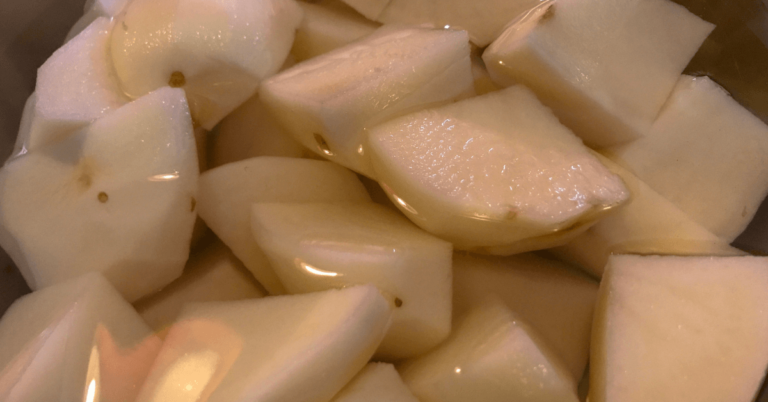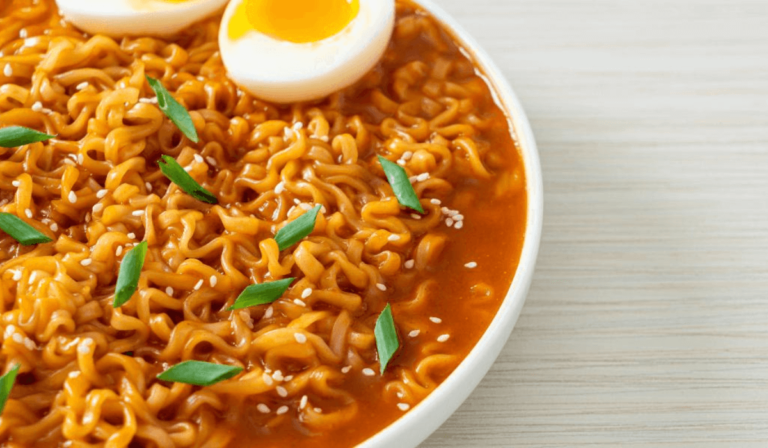Introduction to Kimchi:
Have you ever wondered what makes kimchi such a beloved dish in Korean cuisine? Well, let’s dive into the world of this spicy, sour, and utterly tantalizing staple. Originating from Korea, kimchi isn’t just a dish; it’s a cultural icon, steeped in history and tradition.
The Cultural Tapestry of Kimchi
Kimchi, often described as Korea’s national dish, has a rich history that dates back centuries. But what exactly is kimchi? Simply put, it’s a traditional Korean side dish made from fermented vegetables, primarily napa cabbage and Korean radishes, mixed with a variety of seasonings like chilli pepper, garlic, ginger, and scallions. However, kimchi is more than just a mixture of veggies and spices; it’s a symbol of Korean heritage and culinary expertise.
The Origin Story
So, how did kimchi come to be? The roots of kimchi can be traced back to the ancient Korean practice of salting and fermenting vegetables to preserve them for the winter months. This method not only extended the shelf life of the harvest but also gave birth to a unique flavor profile that has become synonymous with Korean cuisine.
A Cultural Phenomenon
Kimchi isn’t just food; it’s a cultural phenomenon. It’s deeply embedded in the Korean way of life, from its presence in every Korean meal to its role in family gatherings and national festivals. The art of making kimchi, known as kimjang, is even listed as a UNESCO Intangible Cultural Heritage, highlighting its significance in Korean culture.
The Taste Sensation
Now, let’s talk about the taste. What does kimchi taste like? This is where the magic happens. The flavour of kimchi is complex and varies depending on the ingredients and fermentation time. Generally, it strikes a perfect balance between spicy, sour, and umami flavours, with a hint of tanginess. The fermentation process, pivotal in kimchi preparation, enhances these flavors, creating a taste that’s not just delicious but also addictive.
Why Is Kimchi So Popular?
So, why has kimchi captured the hearts (and taste buds) of people worldwide? It’s the unique combination of flavours and health benefits that makes it stand out. Packed with probiotics, vitamins, and fibre, kimchi is not just a treat for the palate but also a boon for health.
In conclusion, kimchi is more than just a dish; it’s a vibrant part of Korean heritage, a testament to the country’s rich culinary traditions, and a flavor sensation that has won over food enthusiasts around the globe. So, next time you savor a bite of kimchi, remember, you’re not just eating a dish; you’re experiencing a piece of Korean culture. Stay tuned for the next part, where we’ll delve into the diverse ingredients that make up this iconic dish.
The Ingredients of Kimchi
Diving deeper into the world of kimchi, let’s explore the ingredients that make this Korean staple a culinary masterpiece. Kimchi’s ingredients are not just components of a recipe; they are the storytellers of Korean tradition and taste.
The Core Ingredients
At the heart of kimchi lies napa cabbage and Korean radishes, known for their crisp texture and ability to absorb flavors. But what truly sets kimchi apart are the seasonings. The quintessential chili pepper provides the heat, while garlic and ginger add depth and pungency. Scallions bring a mild, earthy tone, and the fish sauce or fermented shrimp imparts that essential umami flavor. These ingredients, when combined, create a symphony of flavors that define kimchi’s unique taste.
A Harmony of Flavors
Each ingredient in kimchi plays a crucial role. The chili pepper, for instance, isn’t just about the spice; it’s about adding a layer of warmth that complements the cool crunch of the cabbage. Garlic and ginger, with their robust flavors, act as the backbone, giving kimchi its unmistakable aroma and zest.
Regional Variations
Did you know that there are over 180 varieties of kimchi? Each region in Korea has its own take on kimchi, influenced by local ingredients and climate. In some areas, you might find kimchi made with cucumbers or perilla leaves, offering a different texture and flavor profile. This diversity not only showcases the versatility of kimchi but also the rich tapestry of Korean regional cuisines.
The Art of Balancing Flavors
Creating the perfect batch of kimchi is an art. It’s about balancing the salty, sweet, spicy, and sour elements to achieve that signature kimchi taste. The type and amount of each ingredient can be adjusted, making each batch of kimchi a unique creation.
The Evolution of Ingredients
Over time, the ingredients in kimchi have evolved. Modern adaptations have seen the introduction of new ingredients like sugar, apple, or pear to add a hint of sweetness, countering the spice and sourness. This evolution reflects not only changing tastes but also the adaptability of Korean cuisine to new influences.
In summary, the ingredients of kimchi are much more than just a list on a recipe card. They are the essence of Korean culinary tradition, each adding its unique flavor and texture to create a dish that’s not just delicious but also rich in history. As we move to the next part, we’ll delve into the fascinating taste profile of kimchi, uncovering the secrets behind its irresistible flavor. Stay tuned!
The Taste of Kimchi
Let’s delve into what makes kimchi a unique taste sensation. This Korean staple is not just food; it’s a symphony of flavors, each note playing a crucial role in creating its distinctive taste.
A Symphony of Flavors
Imagine taking a bite of kimchi. The first thing you notice is the spicy kick from the chili peppers, quickly followed by a gentle sourness, thanks to the fermentation. Then comes a tangy zest, mingling with a deep, savory umami. This complex blend of spicy, sour, tangy, and umami is what makes kimchi so irresistible.
Fermentation: The Flavor Enhancer
Fermentation is key to kimchi’s flavor. It transforms the sugars in the vegetables into lactic acid, creating that signature sour tang. The longer it ferments, the stronger the sourness, offering a spectrum of flavors from mildly tangy to boldly piquant.
Variety: The Spice of Kimchi
Kimchi isn’t one-size-fits-all. The classic baechu kimchi, made with napa cabbage, strikes a balance between spice and tang. Kkakdugi, a radish kimchi, is crunchier and slightly sweeter. For a lighter option, oi sobagi, cucumber kimchi, is crisp and less spicy, perfect for those new to kimchi.
Ingredients: Crafting the Taste
Every ingredient in kimchi adds to its taste. Fish sauce or fermented shrimp deepen the flavors, while the type and amount of chili powder control the heat. Even the salt used in fermentation can alter the taste, making each batch of kimchi unique.
Kimchi for Every Palate
Kimchi’s beauty lies in its versatility. Whether you like it mild and sweet or hot and sour, there’s a kimchi for you. This adaptability has made it a global favorite, catering to diverse tastes.
In summary, the taste of kimchi is a delightful journey through complex flavors, reflecting the essence of Korean cuisine. Up next, we’ll explore the art of making kimchi, uncovering the traditional and modern twists in its preparation. Stay tuned!
The Making of Kimchi
Now, let’s turn our attention to the fascinating process of making kimchi. This journey from fresh vegetables to a flavorful ferment is both an art and a science, steeped in tradition yet open to innovation.
Traditional Kimchi Preparation
The traditional method of making kimchi is a time-honored process, passed down through generations. It starts with selecting the right vegetables, like crisp napa cabbage and fresh radishes. These are then salted and left to wilt, reducing their water content and preparing them for fermentation.
Seasoning the Mix
Next comes the seasoning. A mix of chili powder, garlic, ginger, and other spices is prepared. This spicy paste is thoroughly mixed with the wilted vegetables. Often, ingredients like fish sauce or fermented shrimp are added for that extra depth of flavor.
Modern Twists in Kimchi Making
While tradition forms the backbone of kimchi making, modern adaptations have emerged. Today, you’ll find kimchi recipes that include non-traditional ingredients like sugar, apple, or pear to add sweetness, balancing the spice and sourness. These innovations reflect the evolving palate and the global influence on Korean cuisine.
The Fermentation Magic
The heart of kimchi making is fermentation. Once seasoned, the vegetables are packed into jars and left to ferment. During this time, beneficial bacteria work their magic, transforming the ingredients into the tangy, flavorful kimchi we love. The fermentation time can vary, allowing for different flavor profiles – from fresh and crunchy to intensely sour and soft.
The Joy of Homemade Kimchi
Making kimchi at home is a rewarding experience. It’s not just about creating a delicious side dish; it’s about connecting with a cultural practice. Plus, homemade kimchi can be customized to your taste preferences, making it a truly personal culinary adventure.
In conclusion, the making of kimchi is a blend of tradition and innovation, a process that transforms simple ingredients into a complex and flavorful delicacy. As we move to the next part of our exploration, we’ll dive into the health benefits of kimchi, uncovering why this fermented dish is not just tasty but also good for you. Stay tuned!
Health Benefits of Kimchi
As we continue our exploration of kimchi, it’s essential to highlight not just its unique taste and preparation methods, but also its impressive health benefits. This Korean staple is more than a delicious side dish; it’s a powerhouse of nutrition.
Packed with Probiotics
One of the most celebrated health benefits of kimchi is its rich probiotic content. The fermentation process fosters beneficial bacteria, like Lactobacillus, which are crucial for a healthy gut. These probiotics aid in digestion, enhance gut health, and can even boost the immune system.
A Nutrient-Dense Food
Kimchi is loaded with vitamins A and C, and it’s a good source of essential minerals like iron, calcium, and potassium. These nutrients contribute to overall health, supporting the immune system, bone health, and more.
Fiber for Digestive Health
The high fiber content in kimchi is another plus. Fiber aids in digestion and can help maintain a healthy weight. It’s also beneficial for heart health, as it helps to regulate cholesterol levels.
Antioxidant Properties
The ingredients in kimchi, especially the chili peppers and garlic, are rich in antioxidants. These compounds fight oxidative stress in the body, reducing the risk of chronic diseases and promoting overall health.
Weight Loss and Kimchi
Interestingly, kimchi has been linked to weight loss. Its low calorie count, combined with high fiber and probiotics, can aid in weight management. Some studies suggest that the capsaicin in chili peppers, a key ingredient in kimchi, may boost metabolism.
Kimchi for Skin Health
The benefits of kimchi even extend to skin health. The antioxidants and vitamins in kimchi can contribute to a healthy, glowing complexion. Plus, the probiotics in kimchi are known to have positive effects on skin, combating inflammation and oxidative damage.
In conclusion, kimchi is not just a treat for your taste buds; it’s a boon for your health. Its combination of probiotics, vitamins, minerals, and antioxidants makes it a superfood worth incorporating into your diet. As we wrap up our exploration of kimchi, remember that this humble dish is a testament to the harmony of taste and health. Stay tuned for our final part, where we’ll bring together all we’ve learned about this fascinating and flavorful Korean staple.
Kimchi in Culinary Use
As we wrap up our exploration of kimchi, let’s savor its role in the culinary world. Kimchi isn’t just a side dish; it’s a versatile ingredient that has spiced up kitchens globally.
Kimchi Beyond the Korean Table
In Korea, kimchi is a staple, accompanying meals as a flavorful side. But its culinary use stretches far beyond. It’s a star in dishes like kimchi jjigae (stew) and kimchi bokkeumbap (fried rice), where it adds a rich, tangy depth.
Fusion and Creativity
Globally, kimchi has inspired chefs to create fusion dishes like kimchi tacos and burgers. This trend not only introduces kimchi to new palates but also shows how traditional flavors can be reinvented in exciting ways.
Home Cooking with Kimchi
The DIY food trend has brought kimchi into home kitchens. More people are experimenting with making their own kimchi, tailoring it to their tastes. This speaks to kimchi’s adaptability and the growing interest in fermented foods.
A Global Ingredient
Kimchi’s journey from a Korean essential to a global sensation highlights its universal charm. Its unique taste enhances everything from sandwiches to salads, proving its versatility as a culinary ingredient.
In conclusion, kimchi’s culinary journey is a testament to its global appeal. From traditional Korean dishes to innovative fusion creations, kimchi has made its mark as a beloved ingredient worldwide. As we end our kimchi exploration, it’s clear this flavorful, fermented dish is not just a Korean staple but a global culinary treasure.
Conclusion: Embracing the World of Kimchi
As we wrap up our journey into the world of kimchi, it’s clear this Korean dish is more than a culinary delight. It’s a bridge between cultures, a testament to the art of fermentation, and a symbol of balance between taste and health.
Kimchi: A Global Culinary Star
Kimchi has evolved from a traditional Korean staple to a global sensation. Its unique blend of spicy, sour, and umami flavors has won over palates worldwide. This isn’t just a side dish; it’s a cultural icon, showcasing the beauty of Korean cuisine and fermentation.
The Universal Charm of Kimchi
What’s truly remarkable about kimchi is its universal appeal. From Seoul to New York, its distinct taste resonates with diverse culinary traditions. Chefs and home cooks alike embrace kimchi for its versatility and the zesty kick it adds to various dishes.
More Than Just Food
Kimchi’s popularity reflects a growing interest in both tasty and healthful eating. Packed with probiotics, vitamins, and antioxidants, it’s a superfood that’s as good for the body as it is for the taste buds.
A Dish That Unites
Kimchi does more than tantalize the taste buds; it brings people together. It’s a story of tradition meeting modernity, a shared experience that transcends cultural boundaries.
In conclusion, kimchi is a celebration of flavor, health, and cultural diversity. It’s a dish that has crossed borders and won hearts, a testament to the rich tapestry of global cuisine. As we end our exploration, let’s continue to savor and appreciate the spicy, tangy world of kimchi.
FAQs About Kimchi
As we’ve explored the world of kimchi, several common questions often arise about this beloved Korean dish. Here are some FAQs to provide more insight into the fascinating world of kimchi.
What exactly is kimchi?
Kimchi is a traditional Korean side dish made from fermented vegetables, most commonly napa cabbage and Korean radishes, with a variety of seasonings like chili pepper, garlic, ginger, and scallions. It’s known for its spicy, sour, and umami-rich flavor profile.
How is kimchi made?
The process of making kimchi involves salting the vegetables to draw out water, then mixing them with seasonings like chili powder, garlic, and ginger. The mixture is then left to ferment, which can vary in time, allowing the development of its unique flavors.
What does kimchi taste like?
Kimchi has a complex flavor profile that includes spicy, sour, and tangy elements with a deep umami undertone. The taste can vary depending on the ingredients and the length of fermentation, ranging from mildly tangy to intensely piquant.
Is kimchi good for your health?
Yes, kimchi is considered a superfood due to its high content of probiotics, vitamins, and antioxidants. It’s beneficial for digestive health, boosts the immune system, and can contribute to heart health and weight management.
Can kimchi be eaten on its own?
While traditionally served as a side dish, kimchi can certainly be enjoyed on its own. Its bold and complex flavors make it a satisfying snack or a flavorful addition to a variety of dishes.
How long can you store kimchi?
Properly stored in the refrigerator, kimchi can last for several months. The flavor and texture will continue to evolve over time, becoming more sour and soft as it ages.
Can you make kimchi at home?
Absolutely! Making kimchi at home allows for customization in terms of ingredients and spice levels. It involves salting the vegetables, adding seasonings, and allowing the mixture to ferment, which can be a fun and rewarding process.
Is kimchi vegan?
Traditional kimchi often contains fish sauce or fermented shrimp. However, vegan versions can be made by omitting these ingredients or substituting them with soy sauce or miso paste.
Can kimchi be used in cooking?
Yes, kimchi is incredibly versatile in cooking. It can be used in stews, soups, fried rice, pancakes, and even in fusion dishes like tacos and burgers, adding a unique flavor to each dish.
Is kimchi spicy?
Kimchi can range from mildly spicy to very spicy, depending on the amount and type of chili used. The spice level can be adjusted to suit personal preferences, especially when making kimchi at home.
In summary, kimchi is a flavorful, healthy, and versatile dish that has gained global popularity. Whether enjoyed as a side, a main dish, or a cooking ingredient, kimchi offers a unique taste experience that is both delicious and beneficial for health.
- In the section about the health benefits of kimchi:
- Link to “Vegetarian Diets: Foods for Vegetarians Guide” with the anchor text: Explore more about vegetarian diets and how kimchi fits into them.
- In the section discussing kimchi in culinary use, especially in fusion dishes:
- Link to “Popular Vegetarian Cuisine Dish Dishes” with the anchor text: Discover popular vegetarian dishes that could be enhanced with kimchi.
- When talking about making kimchi at home:
- Link to “Vegetarian Cooking Guide: Recipes & Tips” with the anchor text: Get more insights and tips on vegetarian cooking, including dishes like kimchi.






